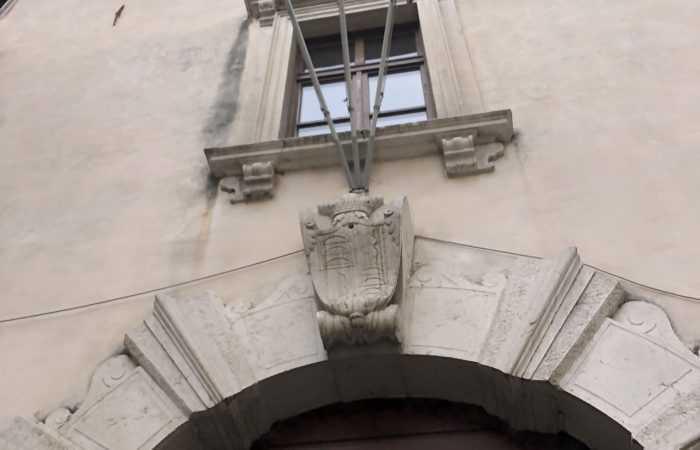
Palazzo dei Panni
5 Via Giovanni Segantini Arco
IT
Palazzo dei Panni si trova in Via Segantini ad Arco. Venne costruito a fine del 1600. Era di proprietà della famiglia dei conti d’Arco, come si evince dallo stemma visibile sul portale d’ingresso.
L’edificio fu fatto costruire da Giovambattista d’Arco. L’idea, non avveratasi era di farne il suo palazzo, con giardino e limonaia. Successivamente il palazzo fu abitato dal conte Emanuele d’Arco, uomo di cultura e fine musicista che alla sua morte lo lasciò in eredità al suo domestico.
Verso la fine del Settecento nel palazzo venne collocato un lanificio e da questo il nome ‘dei Panni’. L’idea fu del sacerdote di Bolognano Giovanni Battista Marosi.
Nell’Ottocento fu utilizzato per scopi differenti: da teatro a sede dei pompieri, ad asilo infantile. All’inizio del Novecento venne acquistato dall’Istituto della Provvidenza e diventò un collegio. Durante l’epoca fascista fu trasformato in Palazzo del Littorio.
Utilizzato successivamente come Scuola, dopo il restauro effettuato negli anni '90, ospita la Biblioteca Civica e la Galleria Civica G. Segantini.
EN
Palazzo dei Panni is located in Via Segantini in Arco. It was built at the end of the 1600s. It was owned by the Counts of Arco family, as can be seen from the coat of arms visible on the entrance portal.
The building was built by Giovambattista d'Arco. The idea, which did not materialize, was to make it his palace, with a garden and lemon house. Subsequently the palace was inhabited by Count Emanuele d'Arco, a man of culture and a fine musician who, on his death, bequeathed it to one of his servants.
Towards the end of the eighteenth century a woolen mill was placed in the building and hence the name Palazzo “dei Panni” (palace of the clothes). The idea came from the priest of Bolognano Giovanni Battista Marosi.
In the nineteenth century it was used for different purposes: from a theater to a fire brigade headquarters, to a kindergarten. At the beginning of the twentieth century it was purchased by the Istituto della Provvidenza and became a boarding school. During the Fascist era it was transformed into Palazzo del Littorio.
Subsequently used as a school, after the restoration carried out in the 90s, it houses the Civic Library and the G. Segantini Civic Gallery.
